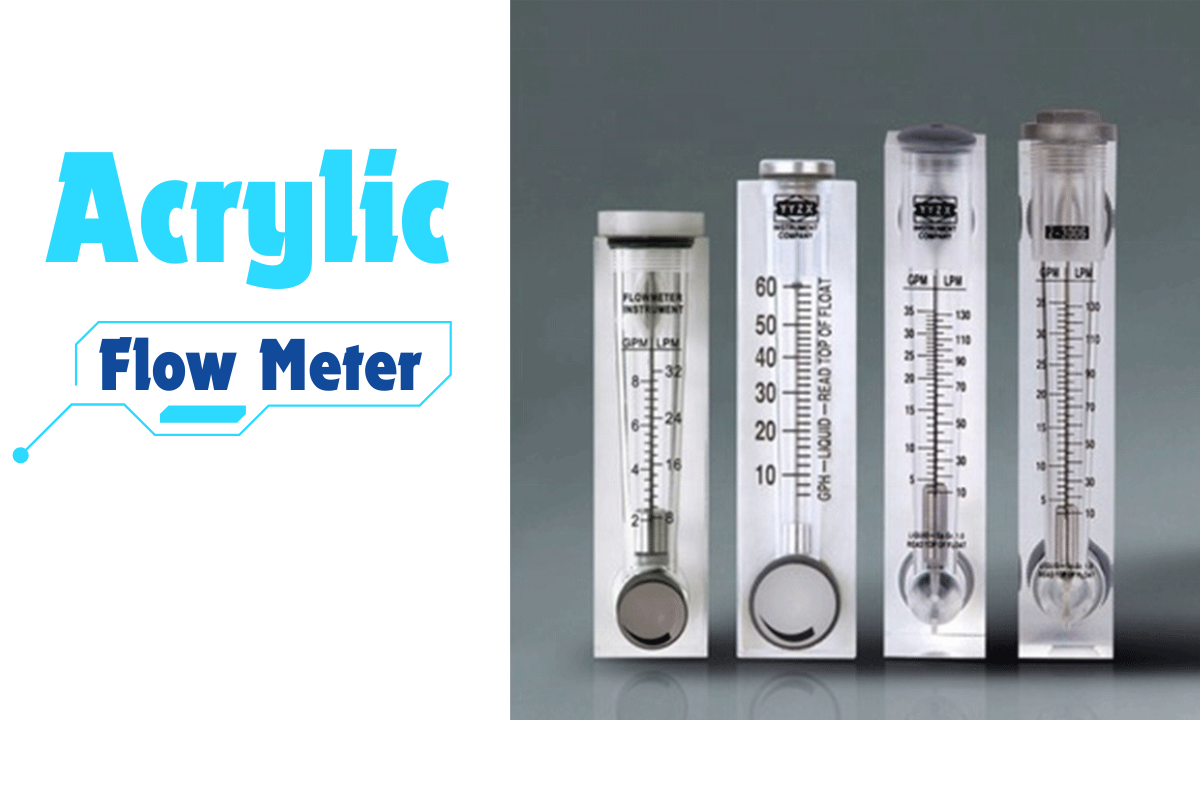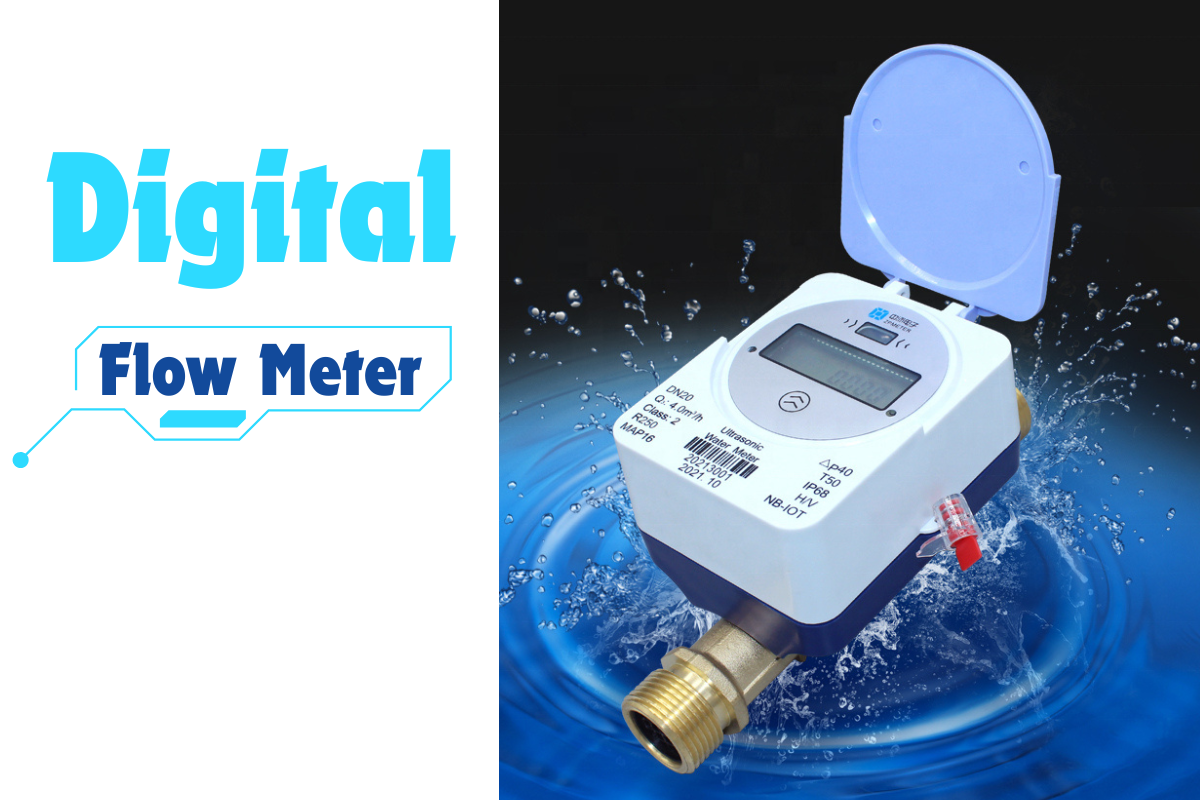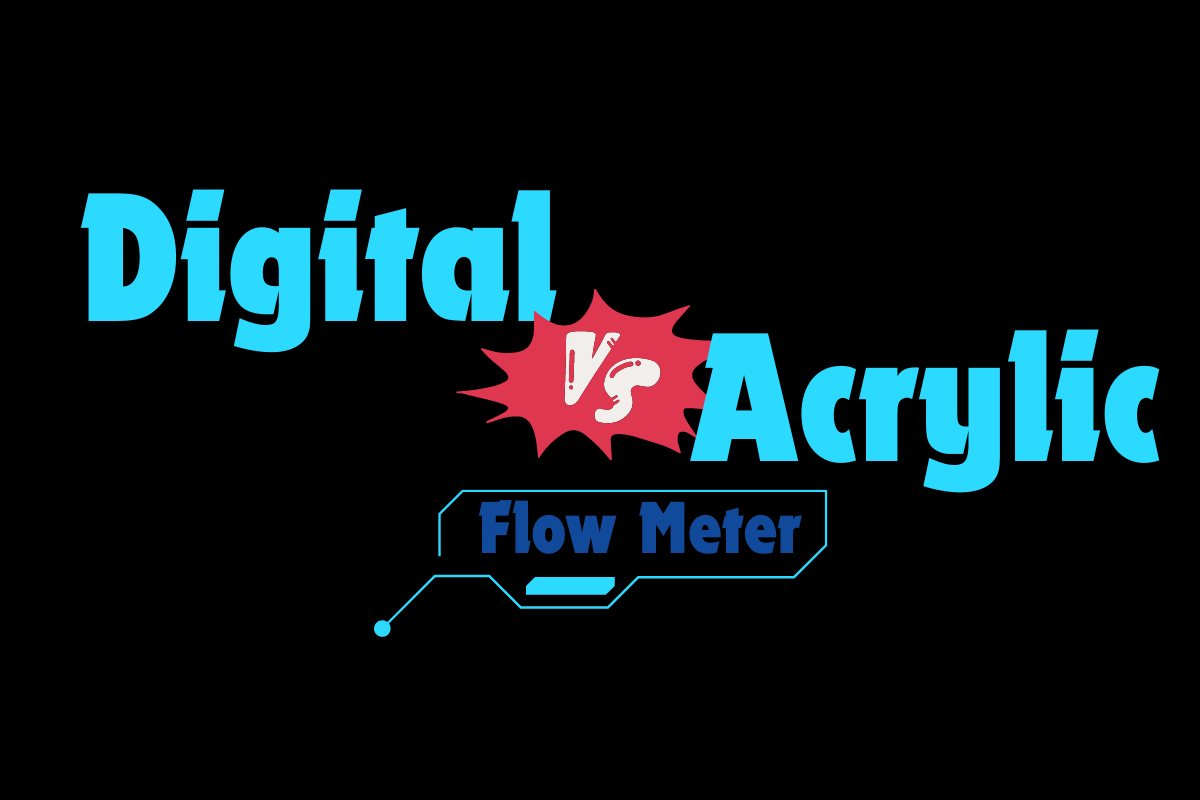Acrylic Flow Meter vs. Digital Flow Meter: Which is Right for Your Application?
Flow meters play a crucial role in measuring the flow of liquids or gases in various industries, from water treatment plants to chemical manufacturing. Two of the most commonly used flow meters are acrylic flow meters (also known as rotameters) and digital flow meters. While both serve the same fundamental purpose, their technology, accuracy, and usability differ significantly. If you’re wondering which flow meter suits your needs, this detailed comparison will help guide your decision.
1. Accuracy: Mechanical vs. Digital Precision
One of the most important factors to consider when choosing a flow meter is its accuracy.

Acrylic Flow Meters: These meters operate on a simple principle where the fluid pushes a float upwards in a tapered acrylic tube, with the flow rate indicated by the float’s position. However, the accuracy is limited. Since readings are taken manually by looking at the float’s position on a printed scale, factors like parallax error (misreading due to the viewing angle) or dirt accumulation in the tube can slightly distort the readings. Generally, acrylic meters provide sufficient accuracy for basic applications but can fall short in high-precision tasks.

Digital Flow Meters: In contrast, digital flow meters offer high-precision measurement. These meters use advanced sensors that can measure even tiny changes in flow rate with high accuracy. They also compensate for external factors like temperature and pressure, making them suitable for situations where consistent and precise measurements are essential. For industries requiring strict quality control, digital meters are the clear winner in terms of accuracy.
2. Ease of Use: Simple and Visual vs. Technologically Advanced
When it comes to ease of use, both types have their pros and cons:
Acrylic Rotameters: One of the main advantages of acrylic rotameters is their simplicity. There are no electronics involved, and reading the flow rate is as easy as glancing at the float inside the transparent tube. This makes them ideal for everyday applications where detailed precision isn’t required. If you’re looking for a straightforward, no-fuss solution, acrylic rotameters are hard to beat.
Digital Flow Meters: On the other hand, digital flow meters offer a more technologically advanced interface, which may require initial setup and calibration. However, once configured, they make life easier by automating the process, providing digital displays, and often allowing for remote monitoring. For those accustomed to digital technology, these meters provide a user-friendly experience, but they do come with a slight learning curve.
3. Cost: Budget-Friendly vs. Investment in Technology
Cost is another major consideration, especially when you’re working with limited budgets.
Acrylic Flow Meters: These are far more affordable than their digital counterparts, making them a cost-effective option for applications where high accuracy isn’t essential. Because they rely on mechanical rather than electronic components, the upfront cost is typically lower, and maintenance expenses are minimal.
Digital Flow Meters: While digital flow meters can be a bigger investment initially, their added functionality and precision may justify the cost, especially in industries where accuracy is critical. They offer features like data logging and remote access, which can streamline processes and reduce long-term operational costs. For businesses looking for automation and real-time tracking, digital meters are worth the investment.
4. Maintenance: Manual Care vs. Low Maintenance
Maintaining a flow meter can affect its lifespan and performance.
Acrylic Rotameters: Since these meters have no electrical components, they require manual inspection and cleaning to prevent debris buildup or clouding of the acrylic tube. Regular maintenance is important to ensure readings remain accurate. However, their simple design makes repairs and maintenance relatively easy and inexpensive.
Digital Flow Meters: These generally require less hands-on maintenance than acrylic meters. However, periodic calibration of sensors may be necessary to maintain accuracy over time. In some cases, certain digital models can be programmed to self-diagnose issues, further reducing the need for frequent manual intervention.
5. Data Output and Monitoring: Visual Inspection vs. Real-Time Data
Another major distinction between the two types is how the data is presented.
Acrylic Flow Meters: These meters offer no electronic data output. Operators must visually observe the float and manually record the flow rate. This makes them suitable for basic or low-volume applications but less ideal for environments that require constant monitoring or detailed flow tracking.
Digital Flow Meters: Digital flow meters offer real-time data, often displayed on an easy-to-read screen. Many models allow for electronic data output, which can be integrated into control systems, enabling automatic adjustments based on flow rate. For high-volume or high-stakes applications, the ability to track flow digitally and store historical data is a significant advantage. In some cases, digital meters even offer wireless connectivity, allowing remote monitoring from anywhere.
6. Response Time: Instant but Manual vs. Instant and Automated
Response time is crucial when rapid adjustments are needed.
Acrylic Flow Meters: These meters respond quickly to changes in flow, as the float rises or falls almost immediately. However, since the reading must be observed manually, there is often a delay in response from the operator’s side, especially if constant monitoring is required.
Digital Flow Meters: In contrast, digital flow meters provide instant, automated readings. These meters can be programmed to send alerts if the flow rate deviates from desired parameters, allowing for immediate response without human intervention. This feature can be particularly valuable in industries where fluctuations in flow can lead to costly consequences.
7. Environmental Durability: Limitations vs. Versatility
The environment in which the flow meter will be used is another important consideration.
Acrylic Rotameters: Made from acrylic, these meters may not be suitable for environments with high pressure, extreme temperatures, or highly corrosive fluids. Acrylic can crack or warp under intense conditions, so these meters are best suited for low-risk environments like HVAC systems or basic water treatment.
Digital Flow Meters: Digital meters can be constructed from more durable materials, such as stainless steel or industrial-grade plastics, which can withstand extreme conditions. Additionally, some digital models are designed to handle high-pressure or high-temperature environments, making them versatile across a wide range of industries.
8. Application Range: General Use vs. Industrial Precision
The types of applications each meter serves differ based on their design and functionality.
Acrylic Flow Meters: These are typically used in low-precision, cost-effective applications where constant visual observation is acceptable. They are popular in laboratory settings, basic water systems, and HVAC applications, where flow measurement doesn’t need to be extremely precise.
Digital Flow Meters: These are ideal for industrial applications where high accuracy and data logging are required. They are frequently used in industries like pharmaceuticals, chemical processing, and energy, where precision flow measurement can impact product quality or safety.
9. Power Requirements: None vs. External Power
Acrylic Rotameters: One significant advantage is that they require no power source, making them ideal for remote locations or situations where electricity is not available. They are purely mechanical devices that rely on the natural forces of fluid dynamics.
Digital Flow Meters: These meters require either electrical power or batteries to operate. While this can limit their use in some remote or mobile applications, many digital models come with power-saving features, and some may even support solar power or other alternative energy sources.
Conclusion: Which Flow Meter is Right for You?
The choice between an acrylic flow meter and a digital flow meter largely depends on your specific needs. If you’re looking for a simple, cost-effective, and easy-to-use solution for basic flow measurement, an acrylic rotameter may be your best bet. However, if precision, real-time data, and automation are important for your application, a digital flow meter is worth the investment.
For industries that require consistent accuracy, data logging, and the ability to integrate with modern control systems, digital flow meters offer a level of performance that acrylic meters simply can’t match. On the other hand, for budget-conscious projects where basic flow measurement is sufficient, acrylic rotameters provide a practical solution.
By weighing the benefits of each, you can make an informed decision based on the demands of your application, budget, and long-term operational goals.



